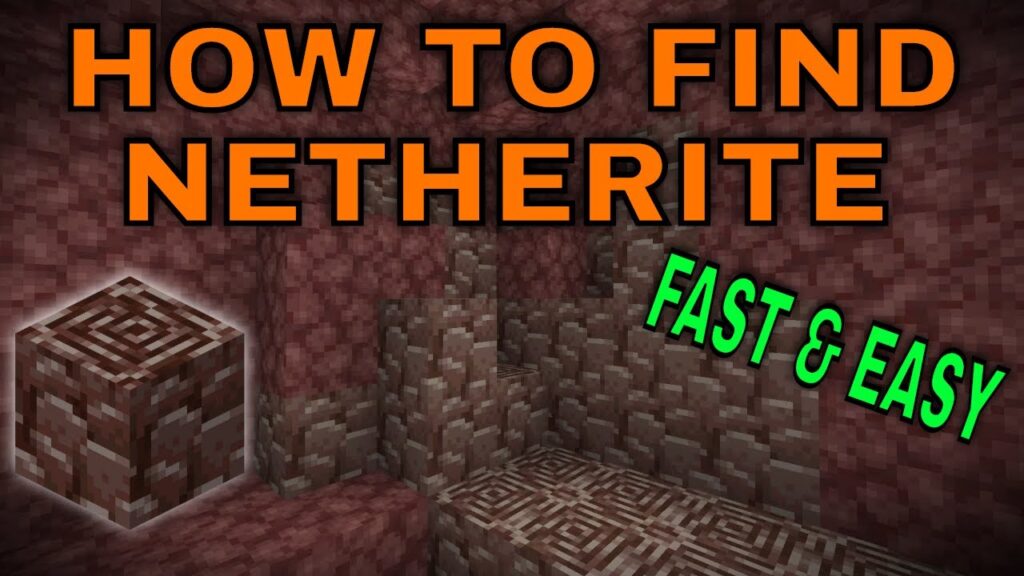Where Does Netherite Spawn in Minecraft? A Comprehensive Guide
Netherite is one of the most coveted materials in Minecraft, known for its durability and strength. It is used to upgrade diamond tools and armor, making them more powerful and resilient. However, obtaining Netherite requires players to find ancient debris, the primary block from which Netherite is crafted. This article will explore where Netherite spawns, how to effectively mine for it, and provide tips for maximizing your chances of finding this valuable resource.
Understanding Netherite and Ancient Debris
Before diving into the specifics of where Netherite spawns, it’s essential to understand what it is and how it relates to ancient debris.
- Netherite: Netherite is an upgrade for diamond equipment. It is more durable and has higher damage output than diamond gear. Additionally, items made from Netherite are resistant to fire and lava, making them highly desirable for players exploring the Nether.
- Ancient Debris: This is the block that players need to mine to obtain Netherite. Ancient debris can be smelted in a furnace to create Netherite scraps, which can then be combined with gold ingots to craft Netherite ingots.
Where Does Ancient Debris Spawn?
Ancient debris can only be found in the Nether dimension, and its spawning mechanics are unique compared to other ores in Minecraft. Here are the key points regarding where ancient debris spawns:
1. Y-Level for Spawning
- Ancient debris primarily spawns between Y-levels 8 and 22, with the highest concentration found at Y-level 15. This level is often considered the “sweet spot” for mining ancient debris.
- Players can find ancient debris at various heights, but it is most commonly located at Y-level 15 due to the distribution mechanics of ore generation in Minecraft.
2. Distribution in Chunks
- Ancient debris spawns in veins of 1 to 3 blocks, but on average, players can expect to find about 2 blocks per chunk. A chunk is a 16×16 block area in the game.
- It is important to note that ancient debris does not generate in clusters like other ores. Instead, it can be found scattered throughout the chunk.
3. Biomes and Environment
- Ancient debris can spawn in all Nether biomes except for the Basalt Delta biome. The Basalt Delta has a different terrain composition that makes mining for ancient debris more challenging due to the presence of basalt and blackstone.
- The other biomes, such as the Nether Wastes and Soul Sand Valley, provide a more favorable environment for finding ancient debris.
Effective Mining Techniques for Ancient Debris
Now that you know where ancient debris spawns, here are some effective mining techniques to maximize your chances of finding it:
1. Strip Mining
- Technique: Strip mining is one of the most straightforward methods for finding ancient debris. Start by digging a horizontal tunnel at Y-level 15. Leave a two-block gap between tunnels to ensure you expose as many blocks as possible.
- Tips: Always carry extra pickaxes, as ancient debris requires a diamond or Netherite pickaxe to mine. Be cautious of lava pockets, as they are common in the Nether.
2. TNT Mining
- Technique: Using TNT can be an effective way to clear large areas quickly. Place TNT blocks strategically and detonate them to expose ancient debris without the need for extensive mining.
- Tips: Ensure you stand at a safe distance when detonating TNT to avoid damage from the blast. This method is particularly useful for players with access to gunpowder.
3. Bed Explosions
- Technique: In the Nether, attempting to sleep in a bed will cause it to explode. Players can use this to their advantage by placing beds and detonating them to clear out large areas.
- Tips: Use beds in a controlled manner, and be prepared for the explosion. This method is cost-effective since beds are relatively easy to craft.
4. Branch Mining
- Technique: Branch mining involves creating a central tunnel and then branching off into smaller tunnels. This method allows you to cover more ground while minimizing the number of blocks you need to mine.
- Tips: Keep your tunnels well-lit to prevent mob spawns, and always check the walls for exposed ancient debris.
Table: Key Information About Ancient Debris and Netherite
| Attribute | Details |
|---|---|
| Primary Block | Ancient Debris |
| Y-Level for Spawning | 8 to 22 (best at 15) |
| Spawn Rate | 1 to 3 blocks per vein, average 2 per chunk |
| Biomes | All except Basalt Delta |
| Mining Tools Required | Diamond or Netherite Pickaxe |
| Crafting | 4 Ancient Debris + 4 Gold Ingots = 1 Netherite Ingot |
Tips for Maximizing Your Chances of Finding Netherite
- Prepare Properly: Before heading into the Nether, ensure you have the right equipment, including pickaxes, food, and armor.
- Use Potions: Consider bringing potions of Fire Resistance to protect yourself from lava and fire damage.
- Stay Organized: Keep your inventory organized to quickly access tools and resources while mining.
- Use Coordinates: Keep track of your coordinates to ensure you remain at the optimal Y-level for finding ancient debris.
- Explore Different Biomes: If you’re having trouble finding ancient debris, try exploring different biomes in the Nether, avoiding the Basalt Delta.
Environmental Considerations
When mining for ancient debris, it’s essential to consider the environmental impact of your actions in the game:
- Avoid Excessive Mining: While mining is a core aspect of Minecraft, be mindful of how much you dig to prevent unnecessary alteration of the landscape.
- Respect Wildlife: The Nether is home to various mobs. Be cautious and avoid disrupting their habitats.
- Use Resources Wisely: Make sure to use your resources efficiently, especially when using explosives or crafting tools.
Conclusion
Finding ancient debris and crafting Netherite is a rewarding experience in Minecraft, enhancing your gameplay and providing you with some of the best gear available. By understanding where ancient debris spawns and employing effective mining techniques, you can maximize your chances of obtaining this valuable resource. Remember to stay prepared, respect the environment, and enjoy your adventures in the Nether!
FAQ Section
- What is Netherite used for?
Netherite is primarily used to upgrade diamond tools and armor, making them more durable and powerful. - Where can I find ancient debris?
Ancient debris can be found in the Nether, primarily at Y-levels 8 to 22, with the best chances at Y-level 15. - Can I find Netherite in chests?
Yes, you can occasionally find Netherite scraps in chests located in Bastion Remnants. - How do I craft Netherite?
To craft Netherite, you need to smelt ancient debris into Netherite scraps and then combine four scraps with four gold ingots. - Is there a specific biome where ancient debris spawns more frequently?
Ancient debris can spawn in all biomes except the Basalt Delta, which is more challenging to mine. - What tools do I need to mine ancient debris?
You need a diamond or Netherite pickaxe to mine ancient debris. - Can I use beds to mine for ancient debris?
Yes, using beds to create explosions is a common method for clearing areas to find ancient debris. - How much ancient debris can I find in a chunk?
On average, you can find about 2 ancient debris blocks per chunk, with a maximum of 5. - What should I do if I encounter lava while mining?
Use potions of Fire Resistance to protect yourself, and be cautious when mining near lava pools. - How can I improve my chances of finding ancient debris?
Use effective mining techniques, prepare properly, and explore different biomes in the Nether.
Additional Resources
For more information on Netherite and ancient debris, you can visit the following link:
This comprehensive guide provides essential insights into where Netherite spawns, how to effectively mine for it, and tips for maximizing your chances of success in Minecraft. If you have further questions or need additional information, feel free to explore more about this exciting aspect of the game.



